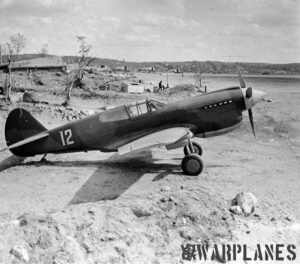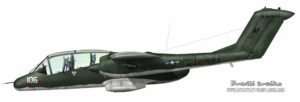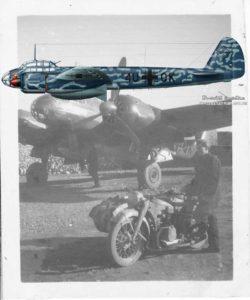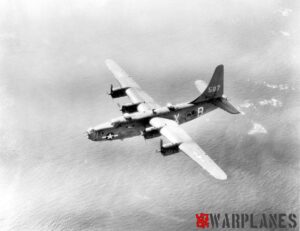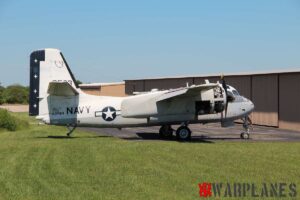Buffalo ace
Statement of Captain W. C. Humberd, USMC, given at 4 June, 1942. is the best description of the classic painting bellow
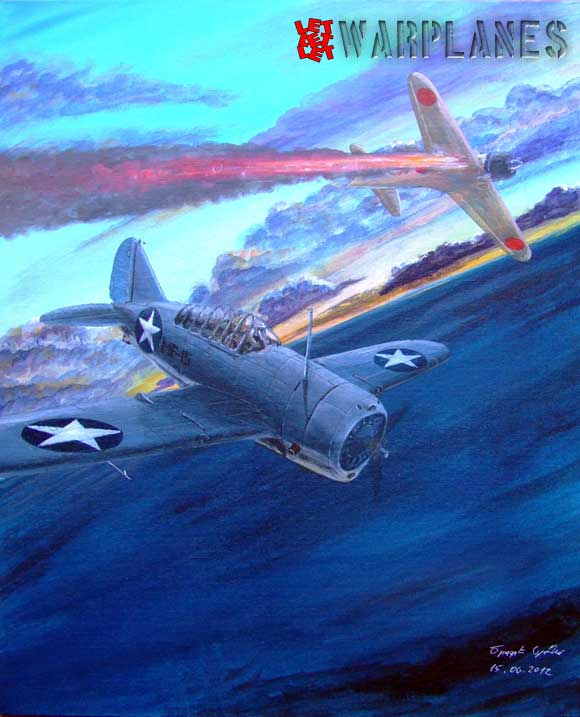
While in the standby division on morning of June 4, 1942, the air raid alarm sounded at 0559. Our division took off at approximately 0605. In our division of six planes, Capt. Kirk Armistead is division leader, 2nd Lt. W. B. Sandoval his wingman, myself section leader of second section with 2nd Lt. W. V. Brooks as wingman, 2nd Lt. C. Kunz 3rd section leader with 2nd Lt. M. E. Mahannah his wingman. We took off immediately after fourth division and started gaining altitude in direction of approaching enemy which was 310 degrees, altitude 12,000 feet given by base radio.
Sight contact was made of enemy formations at approximately 12,000 feet bearing about 30 degrees to port and distance of about 10-15 miles. We continued climbing to 17,000 feet, still keeping the enemy slightly to our port, then when in position of about 3,500 to 4,000 feet above and still to port we made attack, about 30-35 miles bearing 320° from islands.
By time to make attack, my division leaders wingman had dropped back some in which case I was second to attack. I followed the division leader in a high side approach shooting down one (l) bomber in this approach, then coining up for high side approach on other side I again attacked, thinking I might have shot down another bomber in this approach. I came up on other side and started another approach when, about half way through run, I heard a loud noise and turning around I saw a large hole in hood of my plane and also two type 00 navy fighters on me about 200 yards astern, then I immediately pushed over in steep dive in which one (1) followed me. I descended to water level in trying to gain distance on the fighter, the plane staying with me; I stayed at water level with full throttle gaining distance slowly until I decided the distance was great enough to turn on the plane in which case we met head on, I gave a long burst when we were about 300 yards distant and the plane caught on fire and out of control dived in the water. By this time I was approximately 40 miles from first attack and started gaining altitude up to 10,000 feet. My fuel and ammunition were fairly low, about three-fourths exhausted, and I called to see if field was clear for landing, in which case I received an “affirmative”. In the meantime, while climbing for altitude, I discovered my hydraulic fluid had been lost and my flaps and landing gear would not lower so I used emergency system and the wheels lowered, then made proper approach to field and landed. After refueling and rearming, I again took off and while I knew my wheels would not retract, I intended going some distance from field to remain for a period when orders to land were given to all fighting planes.
My plane was a F2A-3, Bureau Number 01553, loaded with 1300 rounds of 50 cal. ammunition, one ball, 2 armor piercing. The attack was made at approximately 0625 and I used approximately 400-600 rounds of ammunition; the final landing being about 0745.
The enemy formations were of a Vee consisting of about five to nine planes each, there being about 4 to 5 of such formations in group we attacked. I don’t know what formation the fighters used or where they were as the first I knew of their presence was the loud burst in my plane and turning, saw them. The type of bombers seems to correspond to the type 99 Aichi (navy), and the fighters were navy type 00.
After my second approach, I saw about four or five planes going down in flames and only identified one as our own, all this was just a glance on my part. Their fighters seemed to out maneuver us in most all repects except in my case, I out dived the one after me and gained distance at sea-level. Frankly, I think the F2A-3 does not compare with their type 00 fighters whatsoever.
My plane had a number of holes in it, three or four making the left beam tank unusable. Had two large holes in fuselage of what appeared to be 20 mm size. No apparent damage to plane except for left beam tank and hydraulic lines broken.
In very close future this classic painting will be used as publication cover art.
Srecko Bradic

